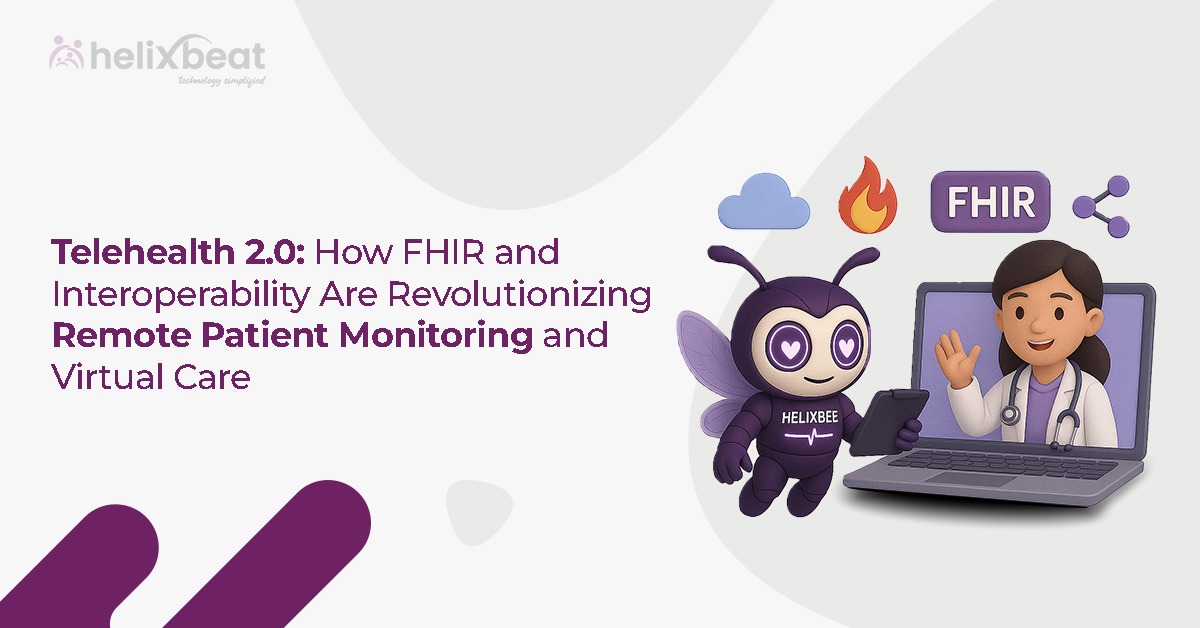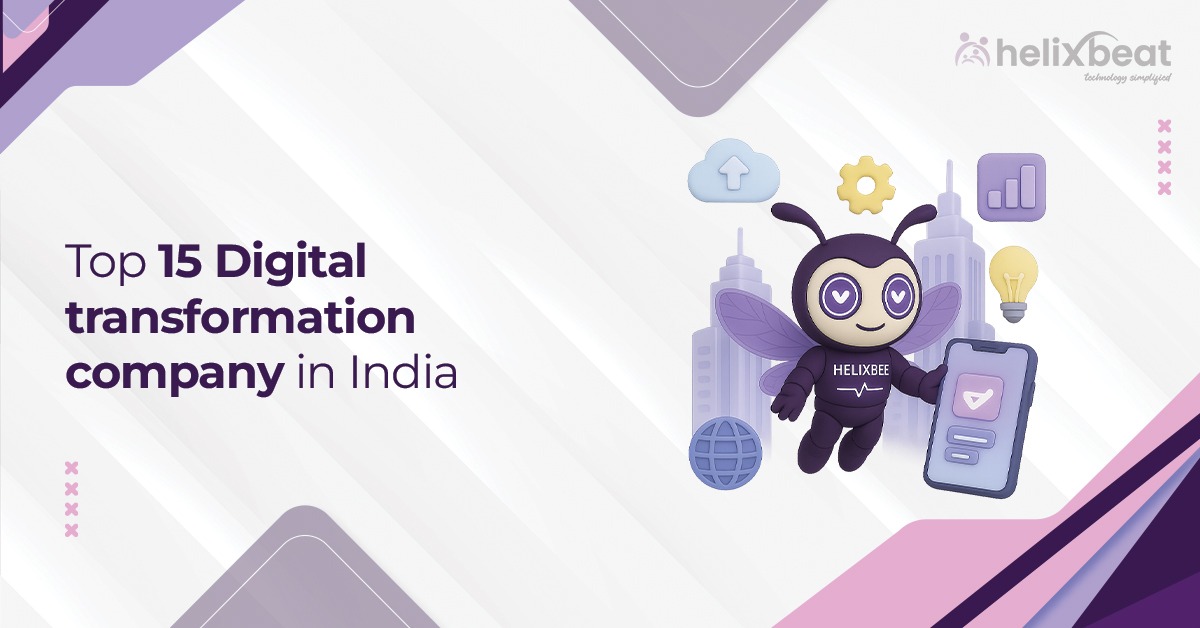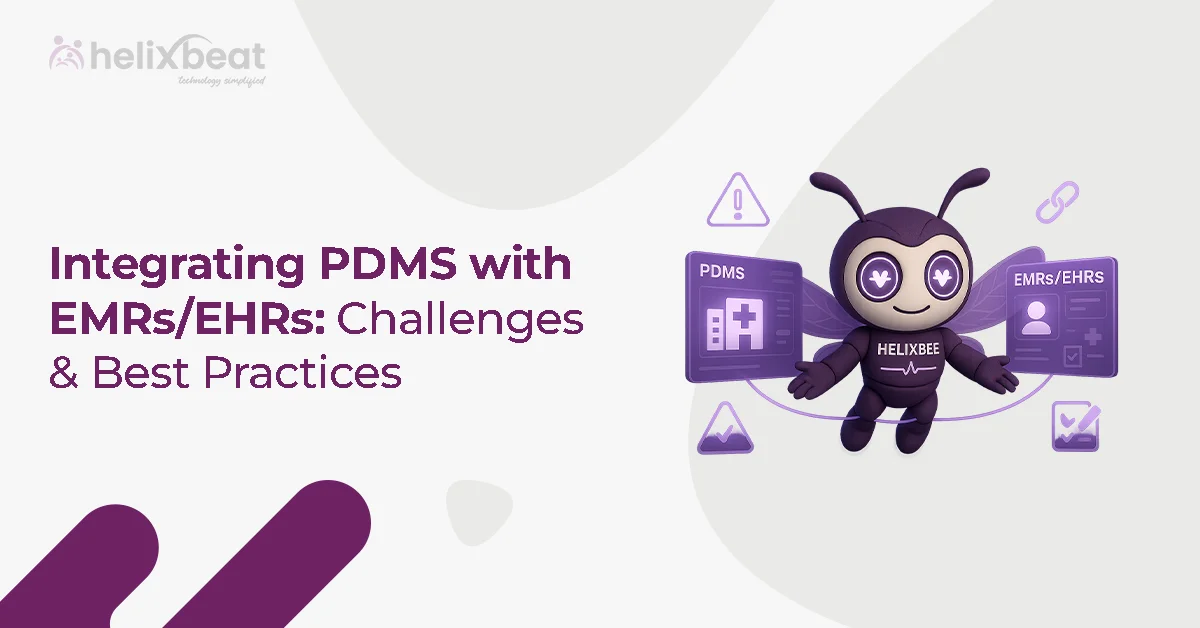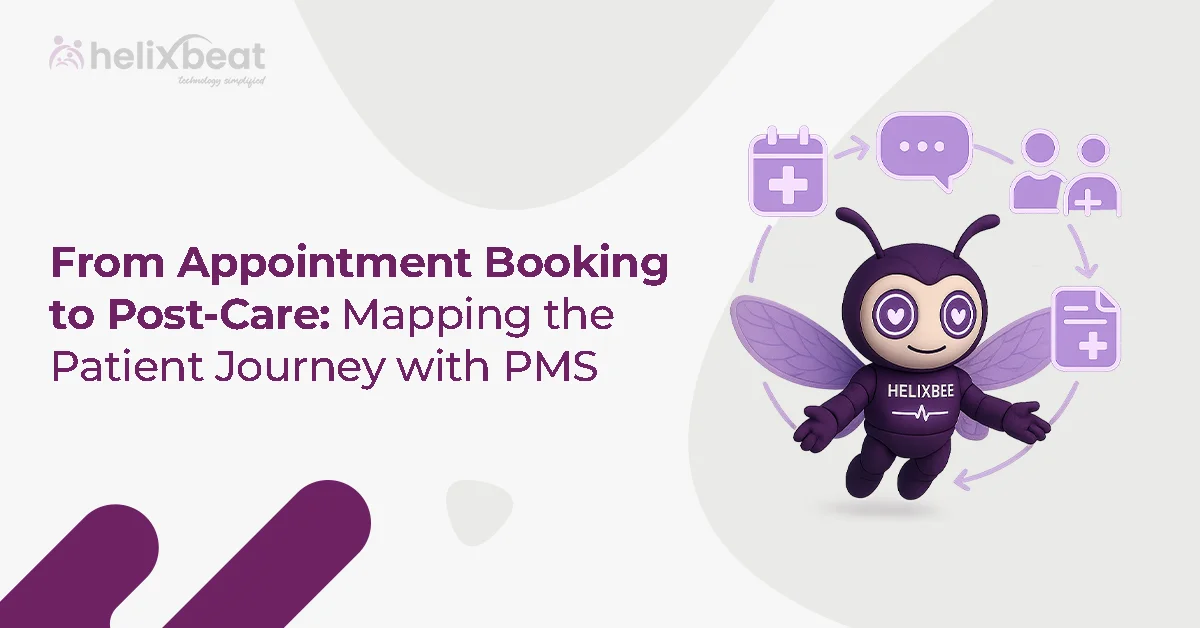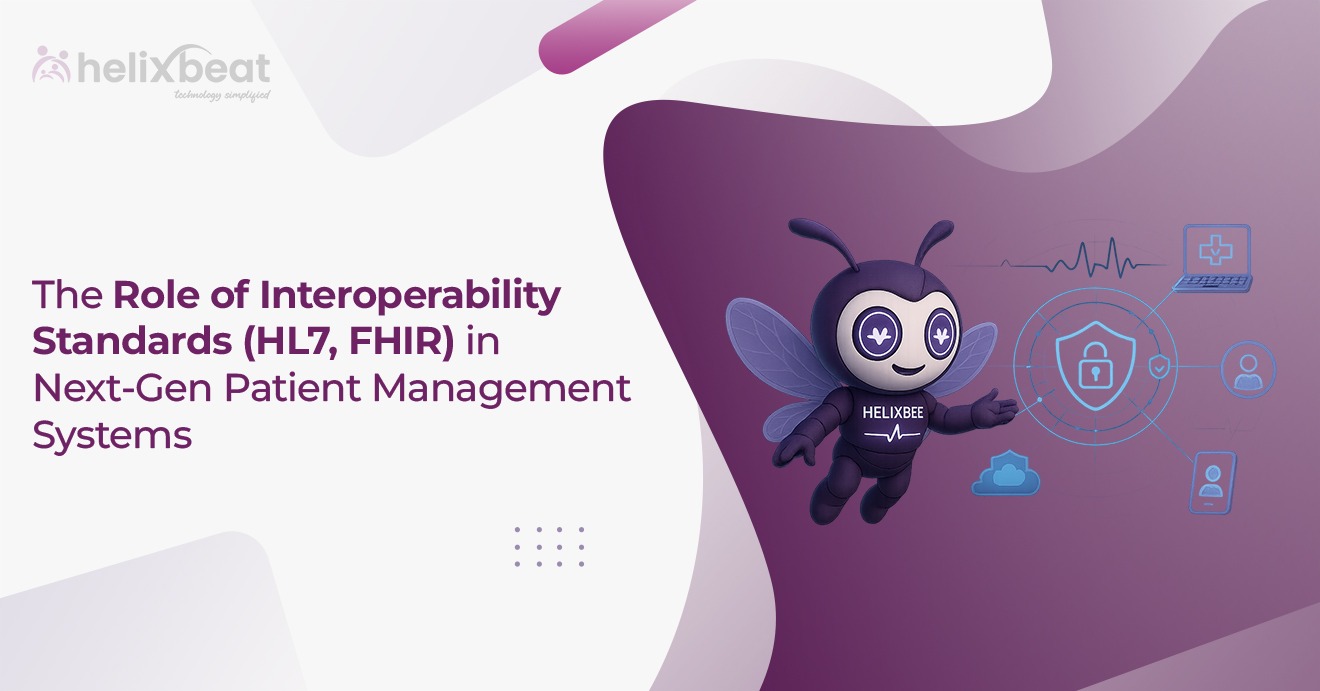The healthcare industry is developing, with Telehealth 2.0 emerging as the new frontier in patient care. As healthcare services move towards more digital and virtual models, FHIR compliant interoperability software is leading the charge in transforming how remote patient monitoring and virtual care are delivered. The FHIR standard ensures seamless data exchange, enhancing healthcare efficiency, and improving the patient experience.
By enabling seamless integration between diverse healthcare systems, FHIR compliant interoperability software ensures real-time access to patient data, enabling the delivery of timely care. With the rise of telemedicine and remote patient monitoring, the integration of FHIR standards is driving a new era of connected care.

Table of Contents
What is FHIR Compliant Interoperability Software?
FHIR (Fast Healthcare Interoperability Resources) is a set of standards that allows healthcare systems to exchange data securely and efficiently. FHIR-compliant systems are designed to utilize FHIR resources, such as patient records, lab results, and imaging data, ensuring that the data exchange process is faster, more accurate, and more cost-effective. By leveraging FHIR servers, healthcare organizations can implement real-time data exchange, enable more timely and informed decision-making, and ultimately patient outcomes.
HelixBeat’s Fusion platform is a perfect example of FHIR compliant interoperability software that empowers healthcare providers to monitor patient health remotely and deliver virtual care effectively. Fusion provides seamless data integration through the FHIR standard, enabling smooth communication between electronic health records (EHRs), telehealth platforms, and remote patient monitoring tools.
Benefits of FHIR Server and FHIR Resources
Implementing FHIR compliant interoperability software offers multiple benefits to healthcare providers, enhancing efficiency, improving patient care, and promoting seamless integration of systems. Here’s an in-depth peek at how FHIR can remake healthcare operations:
Instant Entry to Real-Time Data
With FHIR servers, healthcare providers can immediately access and communicate vital patient data, enabling faster, more informed decision-making.
- Immediate Access to Patient Information
- Clinicians can retrieve real-time health data, including lab results and vital signs, enabling them to respond quickly when a patient’s condition changes.
- Enhanced Emergency Care
- In urgent situations, immediate access to patient records enables medical professionals to provide rapid and accurate interventions, thereby improving outcomes in critical care.
- Pulse Integration for Continuous Monitoring
- Systems like HelixBeat’s Pulse utilize FHIR servers to seamlessly transmit patient data from wearable devices and monitoring equipment.
Elevating Patient Care with Comprehensive Data
FHIR resources provide clinicians with a comprehensive and up-to-date view of a patient’s medical history, enabling tailored and precise treatment.
- FHIR Compliant Interoperability Software
- With FHIR, healthcare providers can see detailed patient records that include diagnostics, prescriptions, lab results, and imaging, ensuring a comprehensive understanding of the patient’s health.
- Personalized Treatment Plans
- The ability to integrate FHIR resources allows clinicians to create customized care plans based on real-time, accurate, and diverse patient data.
- Streamlined Care Coordination
- As FHIR connects multiple systems, it enables better coordination among healthcare teams, ensuring that no critical data is overlooked and leading to more effective patient care.
Cost Reduction and Operational Efficiency
FHIR interoperability significantly reduces costs related to manual data entry, system integration, and overall healthcare administration.
- Minimized Administrative Burden
- Automating data exchange with FHIR reduces human error and minimizes the time spent on manual data entry, thereby reducing operational costs.
- Affordable System Upgrades
- As an open-source standard, FHIR allows healthcare organizations to modify and upgrade their systems at a fraction of the cost of proprietary software.
- Improved Revenue Cycle
- With standardized data exchange, FHIR ensures billing data is accurate and up to date, improving claim approvals and streamlining the payment process.
Scalable Solutions for Expanding Healthcare Needs
FHIR’s modular design enables healthcare systems to scale effortlessly, adding new services and technologies as needed without disrupting existing workflows.
- Smooth Integration of New Technologies
- As healthcare technologies evolve, FHIR facilitates the seamless integration of new tools, such as telemedicine platforms or remote monitoring devices, without requiring an overhaul of your entire system.
- Adaptable to Future Needs
- FHIR’s flexibility allows healthcare systems to quickly adopt new modules, whether for emerging devices or applications, making them future-proof and adaptable to growing needs.
- Long-Term Growth and Flexibility
- FHIR enables healthcare systems to continue evolving with minimal investment, allowing them to keep pace with technological advancements and regulatory changes.
Talk to Our Experts and start your free Trial
Importance of FHIR & Interoperability in Remote Patient Monitoring and Virtual Care
FHIR interoperability is a cornerstone for the success of remote patient monitoring (RPM) and virtual care as the healthcare enterprise transforms toward more decentralized standards, with patients receiving care at home or on non-clinical grounds. FHIR and interoperability play a crucial role in ensuring seamless, real-time healthcare delivery. Here’s why FHIR and interoperability are essential enablers:
1. Improved Access to Data
- FHIR enables healthcare providers to remotely access up-to-date patient data, allowing for continuous monitoring of vital signs, symptoms, and treatment progress.
- Clinicians can quickly intervene if any abnormalities are detected, improving response times and patient outcomes.
2. Seamless Integration
- FHIR facilitates seamless communication between wearable devices, telehealth platforms, and other medical equipment, enabling the integration of real-time patient data sharing.
- Whether it’s patient monitoring, virtual consultations, or other digital health services, FHIR ensures all systems communicate seamlessly, providing a holistic care experience.
3. Patient-Centric Care
- FHIR ensures that healthcare providers have access to comprehensive patient data, enabling them to create personalized care plans tailored to individual needs and preferences.
- By providing patients with easy access to their health data, they become more involved in managing their health, which boosts engagement and satisfaction.
How FHIR Promotes Interoperability in Healthcare
FHIR facilitates interoperability by offering a standardized approach to data exchange across different methods. Unlike older systems, FHIR uses widely believed web technologies such as RESTful APIs and JSON/XML data formats, making it easier to integrate with modern healthcare applications.
Key ways FHIR promotes interoperability:
- Standardized Data Format
- Flexible Integration
- Real-Time Communication
Difference between Telehealth vs. Remote Patient Monitoring
Both telehealth and remote patient monitoring are essential components of virtual care but serve distinct roles in improving access and quality of care.

How Telemedicine Contributes to the Digitalization of Healthcare
Telemedicine is one of the ambitious details behind the digitalization of healthcare. It enables healthcare professionals to supply remote consultations, diagnosis, and therapy via digital platforms, dismissing the barriers of time and distance.
Here’s how telemedicine contributes to the digital shift:
- Reduced In-Person Visits
- Wider Access to Care
- Data Integration
How FHIR and Interoperability are Impacting Remote Care Models?
To enhance comprehension, it’s helpful to incorporate visual aids, such as diagrams or infographics. These visual representations help illustrate how FHIR facilitates data exchange among different healthcare systems, making the concept easier to understand.
For example, a diagram could illustrate how patient data flows between various systems—such as EHRs, telehealth platforms, and remote monitoring devices—utilizing FHIR standards. Visuals like these can break up text and help readers better understand the complex process of data exchange, reinforcing the benefits of FHIR compliant interoperability software.

Learn More About FHIR Solutions by HelixBeat →
In Summary
FHIR standards are not just improving patient outcomes; they’re streamlining healthcare processes and reducing costs. However, the integration of FHIR standards into remote patient monitoring and telemedicine can be difficult and resource intensive. That’s where HelixBeat’s FHIR-compliant solutions step in. Our platform facilitates the procedure by enabling smooth, real-time data exchange between healthcare systems, empowering providers to offer personalized care, reduce inefficiencies, and improve patient satisfaction. With HelixBeat, healthcare providers can overcome the hurdles of digital transformation and lead the way in delivering high-quality care in the digital age.
Schedule a Free Demo Now with HelixBeat PULSE
FAQs
- What is FHIR compliant interoperability software?
FHIR compliant interoperability software enables seamless exchange of healthcare data between different systems, using standardized formats to improve real-time communication and data sharing across platforms.
- How does FHIR improve healthcare data exchange?
FHIR improves healthcare data exchange by providing a standardized, secure, and easily accessible format for health information, allowing different healthcare systems to communicate efficiently and reduce data silos.
- What are the main benefits of using FHIR in telehealth?
The main benefits include real-time data access, improved patient care, reduced administrative costs, and better integration across healthcare systems, all of which enhance the efficiency of telehealth services.
- How does FHIR help in remote patient monitoring?
FHIR ensures secure and real-time data sharing between remote monitoring devices and healthcare providers, allowing for continuous patient health tracking and timely interventions when necessary.
- What is the difference between telehealth and remote patient monitoring?
Telehealth involves virtual consultations with healthcare providers, while remote patient monitoring tracks a patient’s health data using wearables or sensors, sending real-time updates to healthcare providers.
- How can FHIR improve patient outcomes in virtual care?
By enabling seamless data exchange, FHIR ensures that healthcare providers have access to comprehensive and up-to-date patient data, leading to more informed decisions, timely interventions, and better treatment outcomes.
- Why is interoperability important in modern healthcare systems?
Interoperability ensures that healthcare systems can communicate effectively, facilitating the smooth exchange of data, improving coordination, and enabling more efficient and accurate patient care.
- What role does HelixBeat’s FHIR-compliant solution play in healthcare?
HelixBeat’s FHIR-compliant solution simplifies the integration of FHIR standards into existing healthcare systems, enabling seamless real-time data exchange, improving care coordination, and enhancing patient outcomes.
- Is FHIR scalable for healthcare systems of all sizes?
Yes, FHIR’s modular design makes it highly scalable, allowing it to be implemented in healthcare organizations of all sizes, from small clinics to large hospital networks.
- How does FHIR impact patient privacy and security?
FHIR follows strict security protocols to ensure that patient data is exchanged securely, maintaining compliance with regulations like HIPAA and GDPR, and ensuring patient privacy.
- Can FHIR be integrated with existing healthcare software systems?
Yes, FHIR is designed to integrate easily with existing healthcare systems, such as EHRs, telemedicine platforms, and remote patient monitoring tools, enhancing interoperability without requiring a complete system overhaul.
- How does HelixBeat support the digital transformation of healthcare?
HelixBeat supports digital transformation by providing FHIR-compliant solutions that enable seamless data sharing, real-time monitoring, and secure patient communication, streamlining operations and improving healthcare delivery.



